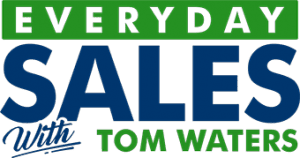What’s the difference between a feature and a benefit?
Selling value with purpose
Every product or service has both features and benefits. These elements of your value proposition are essential to developing a persuasive sales pitch.
The problem is that too many people think that features and benefits are one and the same.
And it destroys their sales cycle.
While the differences are subtle, understanding them will help you create influential copy for both your selling and marketing process.
This article contains everything that you need to know about the nuance of benefits vs features.
Why is it important to know the difference between these two?
Why is this really important?
Isn’t this the same thing, but just saying it in two different ways?
If a product has features that people need, but the benefits of using the product are unclear, then customers will likely not purchase it. They need to know why this is the one product that they should purchase over others.
Features are what the product or service makes available to the client.
Benefits are what the client considers valuable.
Both are really important to know and to state correctly. People are always comparing the benefits vs features of a product or service before buying it.
Definition of features and benefits
In order to understand what features and benefits are, you need to understand the definition of each. This is the best way to know what these terms means and to see that they are really different from each other.
Definition of a Feature
The features of a product are the distinguishing characteristics of the product or service: The things that can be expected from the product.
They are the ingredients that the product was made from, the size of the product and the things that the product can do.
For example, a car may have leather seats, a convertible roof, all-wheel drive, and a powerful engine. These features are likely the first thing a car salesman might leverage to convince a buyer that it’s worth owning.
Definition of a Benefit
A product’s benefits connect to the motivation of why a customer should be purchasing the product.
What the product can do for them.
Which features are relevant to their desires.
Or why these features are more beneficial when compared to competitors.
Benefits offer a reason as to why customers should want to purchase your product.
For example, that same car will likely benefit someone living in an area that’s most often sunny and warm. A convertible roof is less likely to be a benefit in a location with long winters. A buyer may be more interested in gas-economy and practicality, making the powerful engine and leather seats less desirable.
Pros and cons about the features of a product
And how it applies
By understanding the differences between features and benefits, you will understand why it is important to have both these available for your offerings.
Many new entrepreneurs spend all their time focusing on features because they are the most clearly defined and easiest to compile. Developing a list of features your product or service has to offer is still important, it’s just not the complete picture.
Pros
- Features help customers will know exactly what they are receiving for their money
- Features help customers distinguish your advantages over the competition
- Features can be leveraged to showcase exceptional value-per-dollar-spent in marketing copy
Cons
- Customers can compare competing offerings more easily, potentially leading them elsewhere
- Too many features can be exhausting to review, leading to disinterest
- Features are often solely relied upon by sales reps, leading to lazy and uninspired pitches
When applied correctly, feature lists will enhance the prospective client’s buying experience, guiding them to their purchase decision through your material. They are best applied on product pages, service descriptions, contracts, and final marketing materials.
But if a list of features were able to sell on your behalf, every sales rep and marketer would be unemployed.
Pros and cons about the benefits of a product
And how it applies
Understanding how a feature directly benefits a certain type of buyer will enhance your marketing and sales material. Properly outlined benefits will have certain buyers feeling like this product or service was made just for them.
Features are the fuel, benefits light the fire.
Pros
- Benefits can help customers understand added-value that they may not have considered before
- Benefits are based on perspective, which allows flexibility during the sales pitch
- Benefits allow you to highlight certain advantages that your competitors aren’t leveraging yet
Cons
- Benefits are often personal and unique to the buyer, thus it is difficult to create a one-size-fits-all pitch
- Since benefits can be unique, you need to truly learn how customers are using your offerings and develop “buyer-types” to customize an effective presentation
Examples of features versus benefits
Let’s really drive this concept home so you can apply these concepts directly to your business.
Diet soda:
- Feature: Low in calories
- Benefit: Enjoy your favorite sweet beverage without the guilt of higher calories
Computer:
- Feature: Comes with 8GB of RAM
- Benefit: Will be able to run most software required for average consumer use
Toys:
- Feature: Batteries are included.
- Benefit: The toy is ready to be played with right out of the box
Remember, some people don’t like the taste of diet soda and will prefer no soda or an occasional full-calorie soda to your diet alternative. Some hardcore gamers will scoff at 8GB of RAM and video editors or animators will likely need more.
But batteries included? YES. Always include batteries you cheapskate.
Key Takeaway
Some features have benefits that are widely understood by your target audience.
You should prioritize the most relevant features that have the most universally accepted benefits to your audience.
If your offerings are complex, detailed, or nuanced, you should consider the most universally appreciated benefits and leverage those features first.
Will it earn the customer more money? Will it save them money?
Everyone loves money.
Will it save them time? Maybe it takes the same time but reduces frustration?
Will it bring them joy? Will it showcase status or prestige?
Bridging the gap between a feature and a benefit will allow you to lead your sales and marketing campaigns more effectively.
So, if you haven’t listed out all of the features of your offerings yet, do that now.
Then take that list and think hard about why a prospective client should care, which type of prospective client will care the most, which features combined speak to that prospective client, and how you can design your value proposition to effectively communicate these benefits to them.

